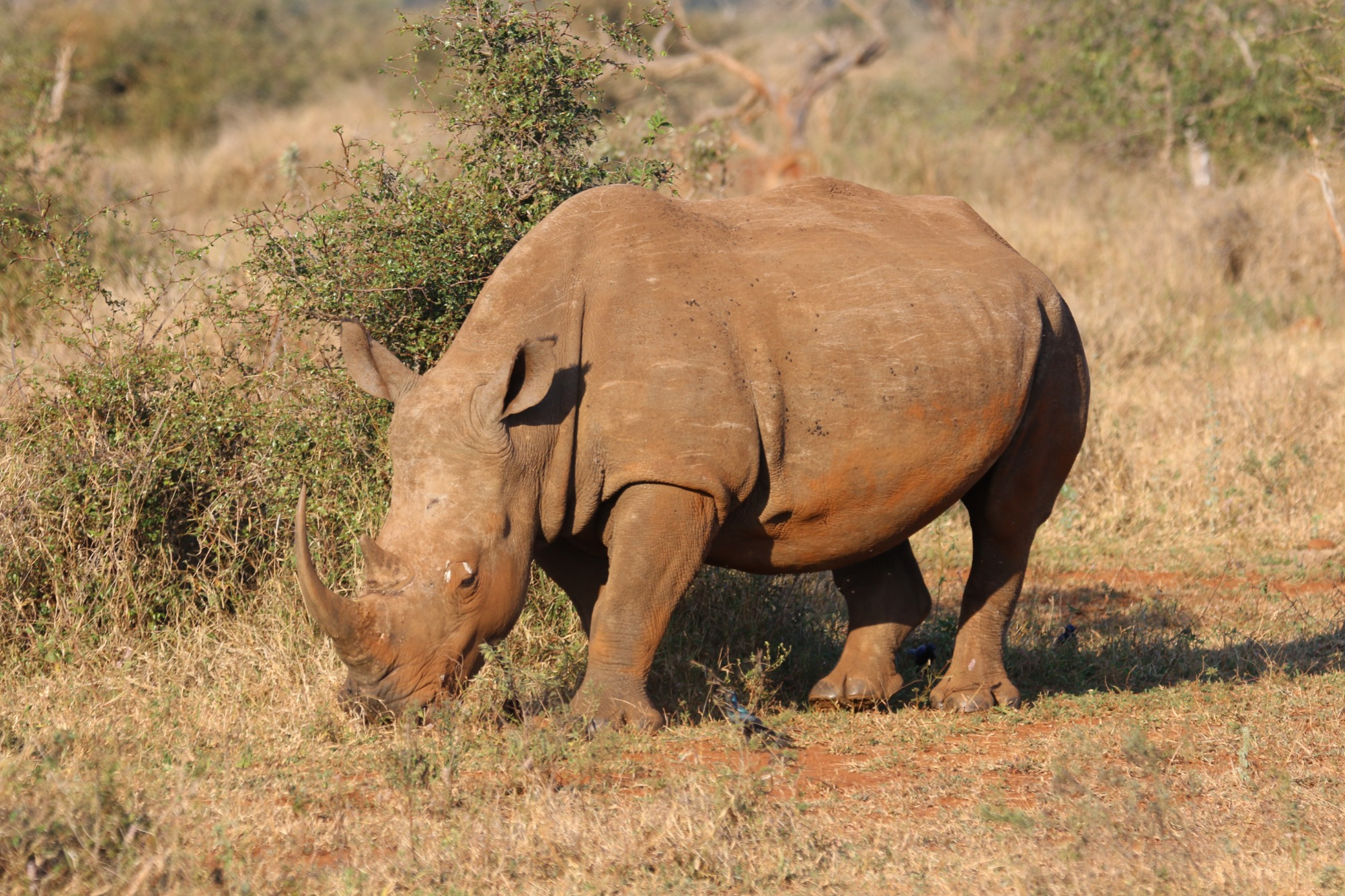

The critically endangered rhinoceros is a crucial part of its ecosystem primarily in present-day South Africa, Namibia, Zimbabwe, and Kenya. Humans have hunted them for centuries, seeing a surge in hunting during European colonization, due in large part to to their valuable signature horns. Rhino horns are still in demand both as a financial investment and for their use in traditional medicines.
After reviewing a century’s worth of photographs, researchers from the University of Cambridge found that the horns themselves have shrunk over time. In the study, published earlier this week in the journal People and Nature, the team measured the horns of 80 rhinos photographed in profile view between 1886 and 2018. The photos, held by the Rhino Resource Center, included all five species of rhino: white, black, Indian, Javan, and Sumatran.
[Related: Does South Africa still need private rhino breeders to fight poaching?]
The team believes that the horns shrunk due to intensive hunting. Shooting the rhinos with the longest horns leaves behind smaller-horned survivors. In turn, these smaller-horned animals reproduce and pass on their traits to future generations. Researchers recorded this phenomenon for other animals before including, in the size of cod and in the antlers of white tailed deer, but this is the first time it has been spotted in rhinos.
Due to their value, studying real rhino horns require strict security protocols. Studying these photographs enabled the team to measure horn length over a long period of time without ever needing to see a real one.
“We were really excited that we could find evidence from photographs that rhino horns have become shorter over time. They’re probably one of the hardest things to work on in natural history because of the security concerns,” Oscar Wilson, formerly a researcher in the University of Cambridge’s Department of Zoology, first author of the report,said in a statement. Wilson is now based at the University of Helsinki, Finland.
Rhinos use their horns for defense, and previous studies have shown that removing horns can have detrimental effects on the animals. “Rhinos evolved their horns for a reason – different species use them in different ways such as helping to grasp food or to defend against predators – so we think that having smaller horns will be detrimental to their survival,” Wilson added.
[Related: Inside the high-tech, last-ditch effort to save the northern white rhino.]
The team also measured their full body length and other body parts to more accurately measure the horn in proportion to body size. But, photographs weren’t the only images they looked at—the researchers analyzed drawings and photographs from over the past 500 years, and noticed a dramatic change in how humans perceived rhinos around 1950. The focus became conservation, not hunting.
“We found that we can use images from the last few centuries to visualize how human attitudes towards wildlife have changed, and how artists have influenced these views,” Ed Turner an associate professor in the Zoology department at Cambridge and the senior author of the report, said in a statement.
A significant number of the photographs in the collection from the late 19th and early 20th century show rhinos shot by hunters. A 1911 photo includes President Theodore Roosevelt, a notorious hunter, sportsman, and specimen collector, standing triumphantly over a black rhino. Some of the other images show rhinos as large and frightening animals, that the team believes were used to help justify hunting.

The researchers say the turn to conservation-based imagery coincides with the collapse of European empires, with multiple African countries becoming independent. European hunters no longer had such easy access to Africa’s wildlife for trophy hunting.
Some of the most recent images in the collection appear to reflect a growing awareness of the threats facing rhinos and the rest of the natural world.
“For at least a few decades now there’s been much more of a focus on the conservation of rhinos – and this is reflected in the more recent images, which relate to their conservation in sanctuaries or their plight in the wild,” said Wilson.
According to the World Wildlife Fund, there were 500,000 rhinos in African and Asia at the beginning of the 20th century. However, by 1970, the numbers dropped to 70,000, with only about 27,000 rhinos remain in the wild today. Due to persistent poaching and habitat loss, very few of these rhinos survive outside national parks and reserves.
